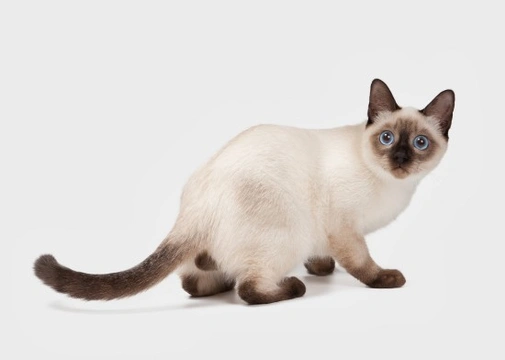
Thai cats - The original descendent of the landrace cats of Thailand
Thailand, formerly known as Siam, has a long and well documented history of producing some of the most ancient, widely known and popular breeds of cat, and cats in Thailand are widely revered as lucky symbols and the pets of choice of royalty. Outside of ancient Egypt where cats were worshipped as gods, few countries have such a long, traceable history of reverence for the cat than Thailand.
When we think of native cats of Thailand, we do tend to most commonly think of the Siamese cat, but there are in fact eight cat breeds native to Thailand, and the Thai cat itself is the most ancient of all of them. The Thai cat formed the foundations of the modern Siamese breed, and Thai cat ancestry is also present within the gene pools of a wide number of other breeds too, and yet the Thai cat is not one that is particularly commonly owned in large numbers outside of Thailand.
In this article, we will look at the origins and modern presence of the Thai cat in more detail, and provide a little more information on this ancient landrace breed. Read on to learn more.
What is a landrace cat?
The Thai cat breed is a descendent of the landrace cats of Thailand, which secures its position as one of the most ancient of native cat breeds. In order to fully understand what this means, it is important to get a basic understanding of the term “landrace,” which can be used to refer to many things as well as cats, such as dogs, other animals and even flora.
The term landrace refers to a domesticated, regional ecotype (such as of a cat, dog, or pretty much any other life form) that has adapted locally over time to form a traditional variant species that is both domesticated and has evolved naturally along with their home region. This comes about due to a combination of factors, including a natural isolation from other breeds, the demands and conditions of the local environment, and a natural evolutionary adaptation.
Landrace breeds tend to be very uniform in terms of their genetic makeup, but also diverse in terms of their breeding compared to created or selectively bred animals. Outcrossing with other breeds and types can lead to the ultimate demise of the given landrace in its entirety, as for a landrace to continue, isolation from the addition of other breeds is generally necessary.
The evolution of the landrace cat into the Thai cat and Siamese cat breeds
The Thai cat has a traceable ancestry to Thailand’s original landrace cat, which is known as the Wichien-maat, or “Moon Diamond” cat. This cat was mentioned in the ancient Tamra Maew book of cat poems, which was illustrated many centuries ago in in Thailand.
Unlike many landrace cats, the Wichien-maat is still present in Thailand in its original form, and despite the diversity and crossings of the type that led to the advent of the Thai cat itself, the original landrace breed has continued to thrive.
The Thai cat diverged from the Wichien-maat in the 1800’s, when the Wichien-maat was imported into England, and selectively bred and crossed until they became the breed that we now call the Siamese. Further selective breeding created the angular, lithe appearance of the modern day Siamese cat, a look that was very distinctive to the more common rounded appearance of most cat breeds of the day, and one that soon became popular. The original Wichien-maat cats were less angular and had a much rounder head and shorter ears than the modern Siamese cat, and this appearance is the look that the Thai cat itself still retains.
This explains the close relation between the Thai cat and the Siamese cat, but their rather distinctively separate appearances. This is also why the Thai cat is sometimes referred to as the Traditional, Classical or Old-style Siamese.
Thai cats today
The Thai cat is one of the most ancient and widely documented traditional cat breeds, and yet they are only now being properly classified and registered with the main feline cat registries, still often being referred to as a variant or ancestor of the Siamese cat in many cases, and not always as a breed in their own right.
The International Cat Association voted to recognise the so-called Old-style Siamese cat as the Thai cat from 2007 onwards, and as of 2010, the breed became recognised as a Championship breed in its own right, with full access to breed shows and registration.
One of the main reasons for the popularity of the Thai cat aside from its own merits is due to its close relation to the original Siamese cats, which means that the Thai cat can be outcrossed with the Siamese to add genetic diversity to the Siamese cat gene pool. The Thai cat’s breed standard permits outcrossing with both the modern Siamese cat and imported Wichien-maat cats, and the Thai cat is almost certain to become a much more common sight both within the show ring and the domestic home within the UK over the coming years.



